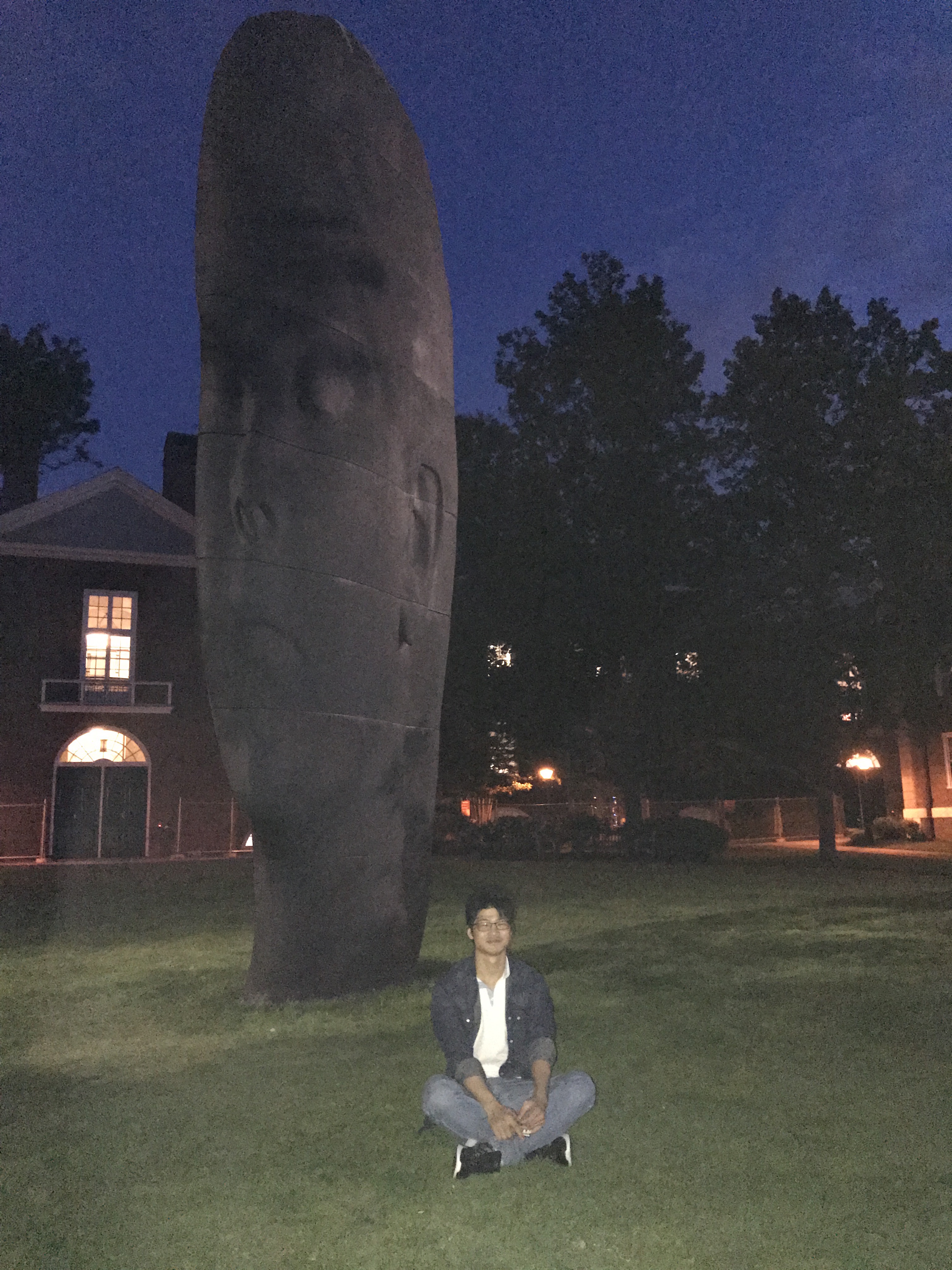

Massive stars contain mass higher than 8 times of solar mass. They always form with one or more companion(s) in cluster enviroments.
Such as 24 micro dark, 70 micro or even 100 micro dark clouds.
Filamentary strcutures are ubiquitously seen in the ISM.
Star formation feedback: jets, outflows, radiations, supernova...
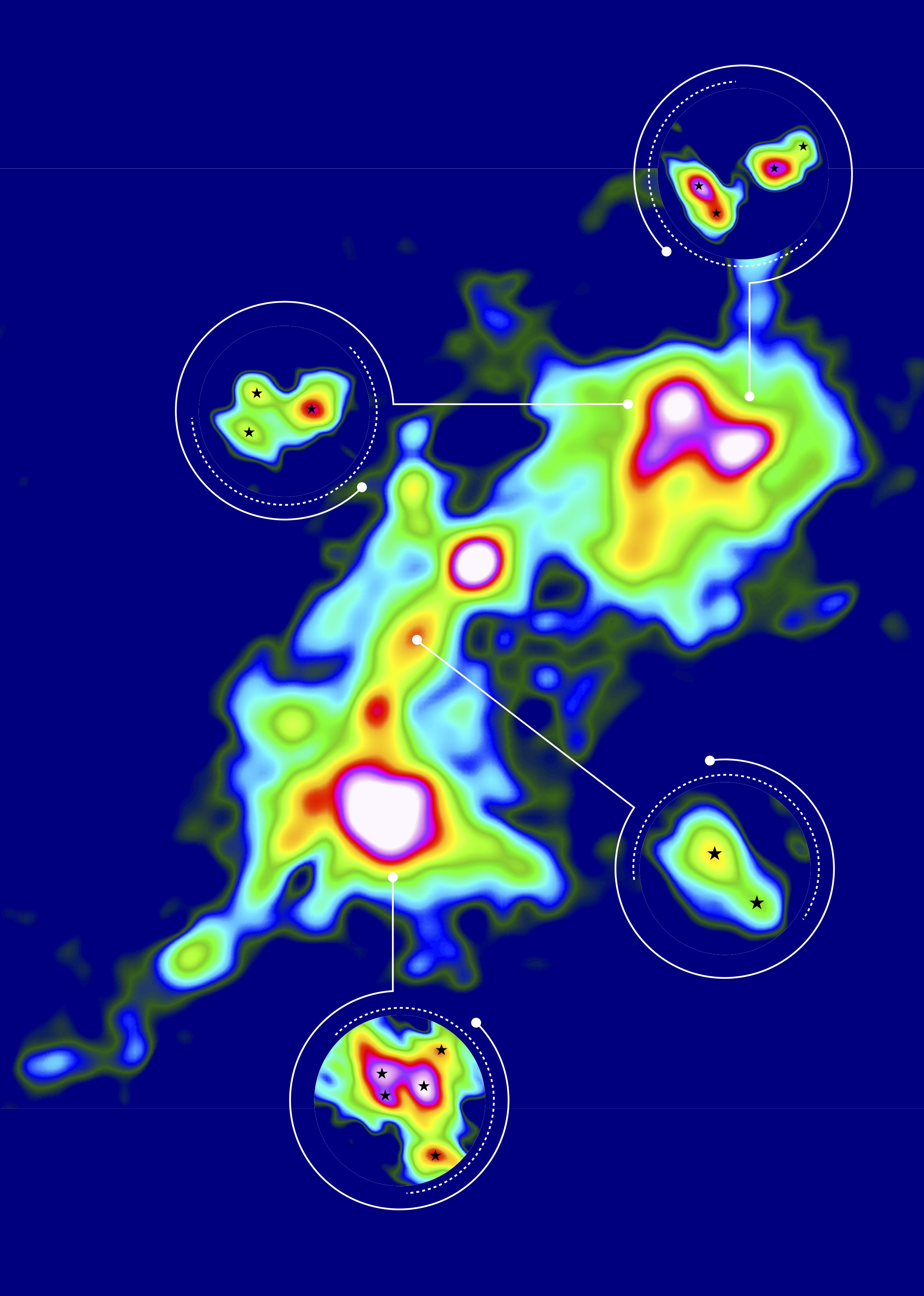
High-mass stars in the Milky Way are overwhelmingly (>80%) found in binaries or higher-order
multiplicity systems that play a key role in governing cluster dynamics and stellar evolution.
However, it is yet unclear whether they are predominantly formed from in situ fragmentation at
various scales (e.g., disks/cores/filaments fragmentation) or subsequent stellar capture in
clusters because lacking direct measurements of their initial configuration and properties at
the early phases of cluster formation.
I led an ALMA program to study the formation of binary and higher-order multiplicity systems toward
massive protocluster-forming regions.
We have submitted our case study toward G333.23--0.06, which is a typical high-mass star-forming region:
"High-order multiplicity in high-mass star formation", Li et al 2023b, Nature Astronomy.
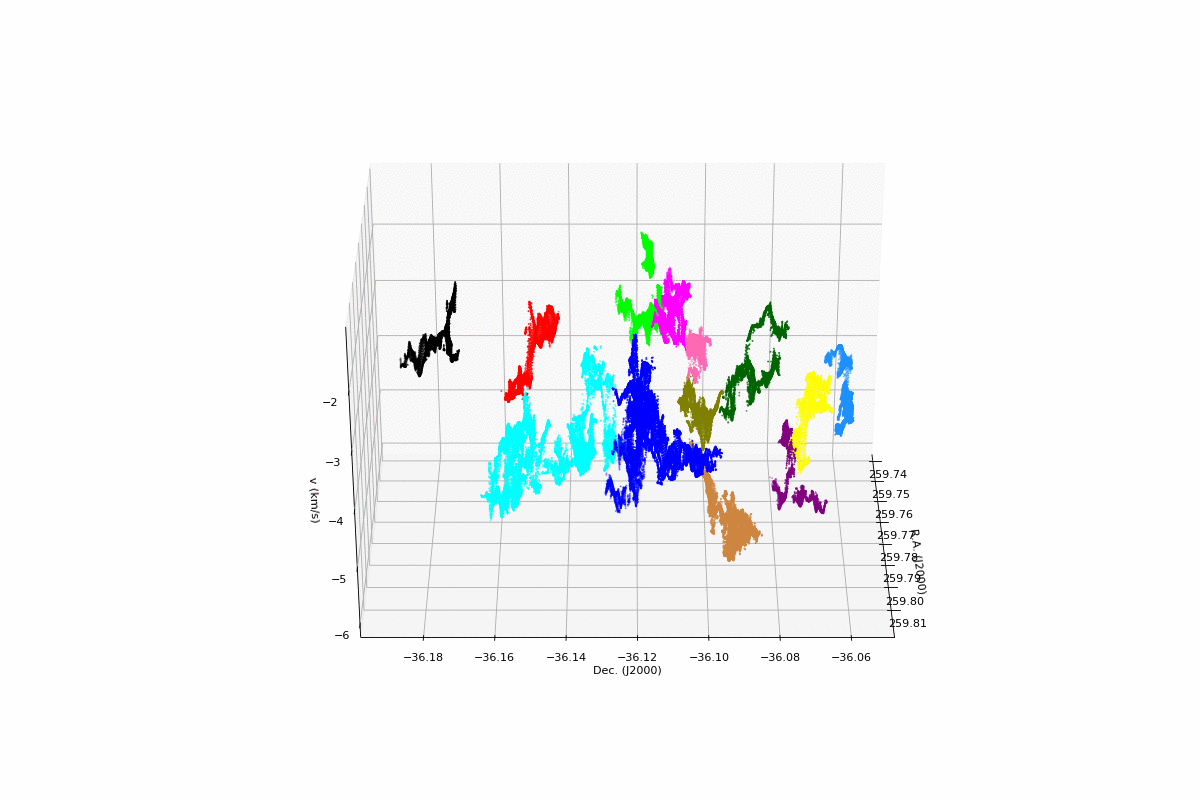
Filamentary structures are ubiquitously seen in the interstellar medium, and it closely connected
to star formation. We believe the filaments plays a crucial role in regulating star formation,
while the processes of massive star and cluster formation in filaments are still less well understood.
What we do are using molecular lines and dust continuum emissions to reveal the filaments properties,
how it regulates embedded dense structures which form stars. I have developed a Python code to identify
the filament in Position-Positon-Velovity (PPV) space using line emissions.
Here is the paper about the subsonic and transoinc filaments toward NGC6334S:
"ALMA observations of NGC 6334S. II. Subsonic and Transonic Narrow Filaments in a High-mass Star Formation Cloud",
Li et al 2022, ApJ, 926, 165.
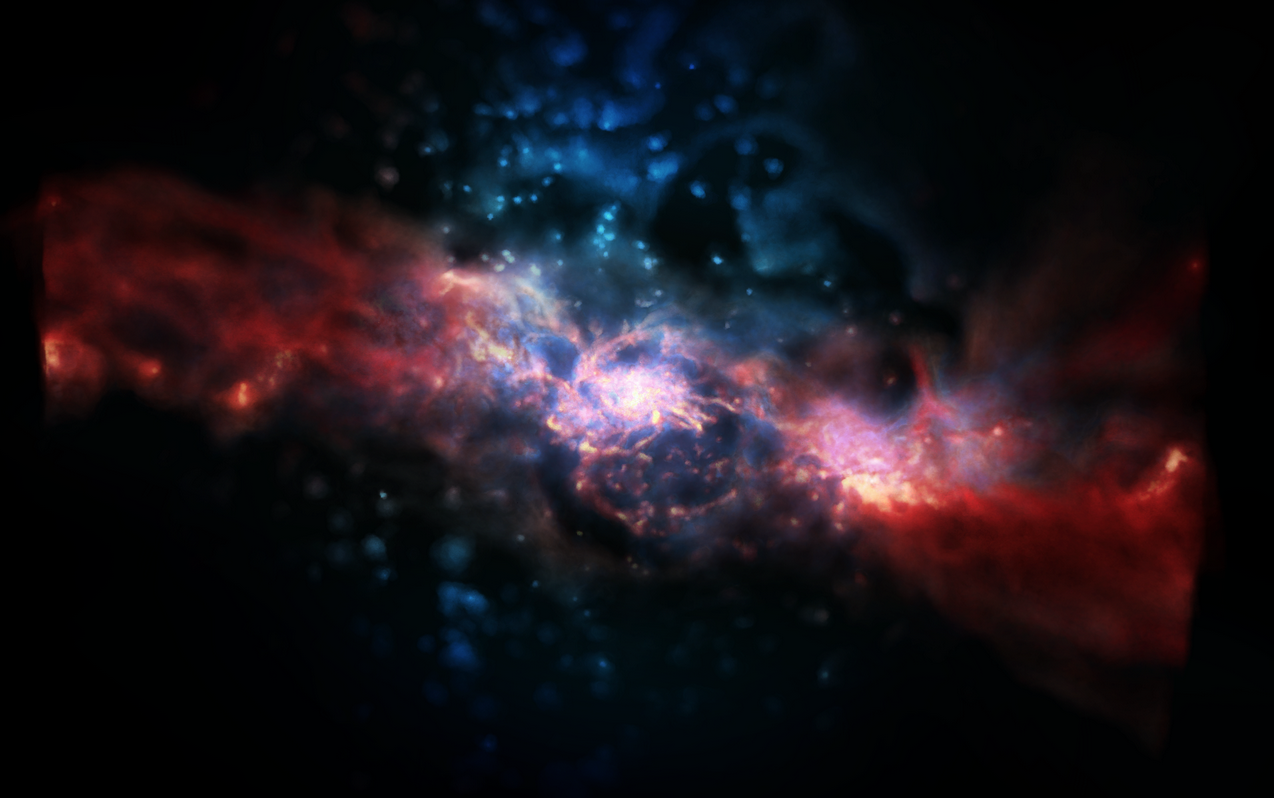
According to an apocryphal story, Werner Heisenberg was asked what he would ask God, given the opportunity.
His reply was: "When I meet God, I am going to ask him two questions: Why relatively? And why turbulence?
I really believe he will have an answer for the first."
I led an ALMA project to measure the turbulent properties in molecular clouds. We have studied the turbulent
properties toward a subregion (NGC 6334S) of my favor molecular cloud, NGC 6334 complex, with ALMA observations.
We find that the gas non-thermal motions are predominantly subsonic or transonic toward NGC 6334S and its
embedded dense cores.
We also study turbulent properteis toward a sample of 70 micro dark clumps and their embedded dense cores.
Here is the paper about the turbulent properties toward NGC6334S:
"ALMA Observations of NGC 6334S. I. Forming Massive Stars and Clusters in Subsonic and Transonic Filamentary Clouds",
Li et al 2020, ApJ, 896, 110.
Here are some papers about the turbulece dissipation toward some embedded dense cores:
"ALMA observations of NGC 6334S. II. Subsonic and Transonic Narrow Filaments in a High-mass Star Formation Cloud",
Li et al 2022, ApJ, 926, 165.
"A Low-mass Cold and Quiescent Core Population in a Massive Star Protocluster",
Li et al 2021, ApJL, 912, 7.
Here is the papers about the turbulent properties of embedded dense cores (abuot 300 cores) in 70 micro dark massive clumps:
"The ALMA Survey of 70 μm Dark High-mass Clumps in Early Stages (ASHES). VIII. Dynamics of Embedded Dense Cores",
Li et al 2023, ApJ, 949, 109.
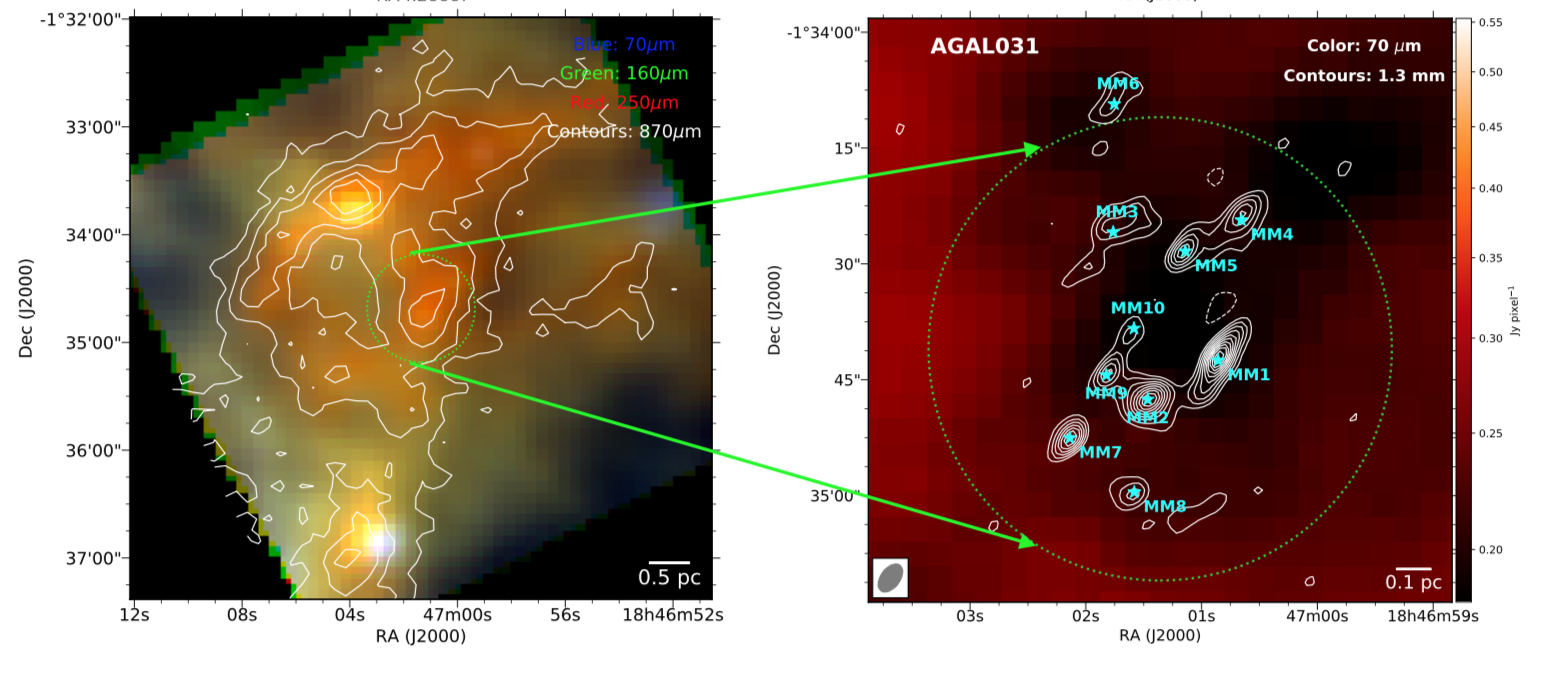
To complete the picture of massive star and cluster formation, we must understand their extreme early evolutionary stages.
I led an SMA project to survey a sample of massive 70 micro dark clouds which represents the extreme early stage of
massive star formation.
Here are some our papers about the 70 micro dark clumps:
(1)
"Formation of Massive Protostellar Clusters—Observations of Massive 70 μm Dark Molecular Clouds",
Li et al 2019, ApJ, 886, 130.
(2)
"ALMA Observations of NGC 6334S. I. Forming Massive Stars and Clusters in Subsonic and Transonic Filamentary Clouds",
Li et al 2020, ApJ, 896, 110.
(3)
"The ALMA Survey of 70 μm Dark High-mass Clumps in Early Stages (ASHES).
II. Molecular Outflows in the Extreme Early Stages of Protocluster Formation",
Li et al 2020, ApJ, 903, 119.
(4)
"The ALMA Survey of 70 μm Dark High-mass Clumps in Early Stages (ASHES). VII. Chemistry of Embedded Dense Cores",
Li et al 2022, ApJ, 939, 102.
(5)
"The ALMA Survey of 70 μm Dark High-mass Clumps in Early Stages (ASHES). VIII. Dynamics of Embedded Dense Cores",
Li et al 2023, ApJ, 949, 109.
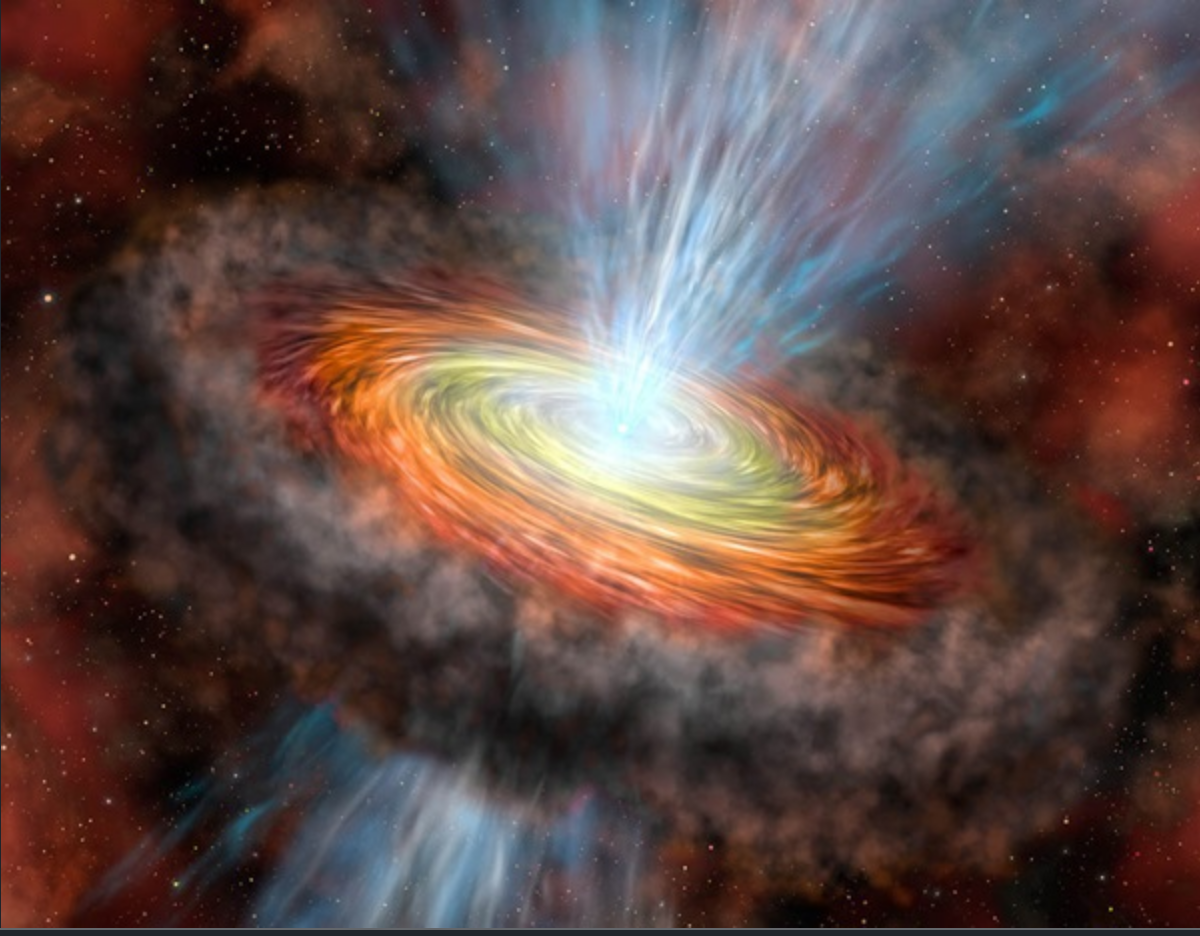
Star formation feedbacks, in form of outflows, jets and radiations, are significantly changing the surrounding environments.
I led a series of programs with serval telescopes to survey outflows at various evolutionary stages of massive star formation.
Here is our paper of studying shock/outflow motions toward about 200 massive star-forming regions:
"A SiO J = 5 → 4 Survey Toward Massive Star Formation Regions", Li et al 2019, ApJ, 878, 29.
Here is the paper of our investigation the impact of outflow on the parental clumps in extreme
early evolutnary phasee of massive star-forming regions:
"The ALMA Survey of 70 μm Dark High-mass Clumps in Early Stages (ASHES).
II. Molecular Outflows in the Extreme Early Stages of Protocluster Formation", Li et al 2020, ApJ, 903, 119.

More than 300 molecules have been found in interstellar medium. The molecular lines are ideal probes of various gas environments.
We have carried out a line survey toward 4 famous HII regions, which in different molecular clouds, in order to study the gas
properties in different molecular clouds.
We also search for the molecular lines emission in extreme early evolutionary stages (e.g., 70 micro dark massive clumps/cores), and investigate their properties.
Here is the paper of line survey toward 4 HII regions:
"Millimetre spectral line mapping observations towards four massive star-forming H II regions",
Li et al 2017, MNRAS, 466, 248.
Here is our study of chemistry of embedded dense cores in 70 micro dark massive clumps.
"The ALMA Survey of 70 μm Dark High-mass Clumps in Early Stages (ASHES). VII. Chemistry of Embedded Dense Cores",
Li et al 2022, ApJ, 939, 102.
Max Planck Institute for Astronomy,
Königstuhl 17,
69117 Heidelberg, Germany
Office: 308/1
shanghuo.li@gmail.com, li@mpia.de
+49-160-504-6163